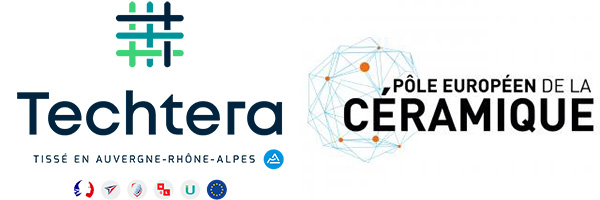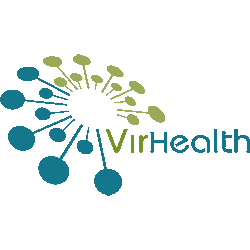
Department: Antimicrobial Surfaces Testing Services
- Antiviral activity
Hard surfaces
ISO21702: Measurement of antiviral activity on plastics and other non-porous surfaces.
ISO7581 (modified for virus): Evaluation of bactericidal activity of a non-porous antimicrobial surface used in a dry environment.
Hydrophobic materials
ASTM E2180-18 (modified for virus): Standard Test Method for Determining the Activity of Incorporated Antimicrobial Agent(s) In Polymeric or Hydrophobic Materials.
Technical Ceramics
ISO18061: Fine Ceramics (Advanced Ceramics, Advanced Technical Ceramics). Determination of antiviral activity of semiconducting photocatalytic materials.
Powder (not water-soluble), complex and/or 3D materials
ASTM E2149-20 (modified for virus): Determining the Antimicrobial Activity of Immobilized Antimicrobial Agents Under Dynamic Contact Conditions.
Porous materials
Modified ISO21702 protocol for porous materials.
Transfer of virus (VirHealth procedure): protocol for transferring a dry viral inoculum by contact.
Textile
ISO 18184: Determination of the antiviral activity of textiles products.
Hydrophobic textile: Transfer of dry viral inoculum by contact (VirHealth procedure).


Viral strains tested at VirHealth laboratory:
Enveloped viral strain
Vaccinia virus MVA
Influenza H1N1 (human)
Influenza H1N1/PR8 (human)
Influenza H3N2 (human)
Influenza H1N1 (avian)
Influenza H7N1 (avian)
Influenza H3N8 (avian)
Influenza H5N2 (avian)
Influenza H9N2 (avian)
Influenza H3N2 (avian)
Influenza H1N1 (porcine)
Influenza H7N7 (equine)
Influenza Type B/L1 (human)
Influenza Type B/L2 (human)
Influenza Type B/L1 (human)
Influenza Type B/L2 (human)
Infection salmon anaemia virus (ISAV, fish)
Herpes Simplex virus Type 1 (HSV1, human)
Respiratory syncytial virus (RSV, human)
Parainfluenza Type 2 (human)
Parainfluenza Type 3 (human)
Porcine Epidemic Diarrhea Virus (PEDV, porcine)
Porcine Reproductive Respiratory Syndrome Virus (PRRSV, porcine)
Bovine Viral Diarrhea Virus (BVDV, bovine, surrogate for Human Hepatitis C)
Coronavirus 229E (human)
Equine Herpesvirus 1 (equine)
Pseudorabies Virus (PrV/SuHV1, swine, surrogate for Hepatitis B)
Feline Coronavirus (FCoV, feline)
Bovine Coronavirus (BCoV, bovine)
Transmissible Gastroenteritis coronavirus (TGEV, porcine)
Murine Hepatitis Virus (MHV, murine)
SARS-CoV-2 (beta variant, human)
SARS-CoV-2 (delta variant, human)
SARS-CoV-2 (omicron variant, human)
SARS-CoV-2 (UK variant, human)
NewCaslte Disease virus (avian)
Metapneumovirus (human)
Non-Enveloped viral strain
Adenovirus Type 5 (Ad5, human)
Adenovirus Type 3
Murine Norovirus (MNV, murine)
Poliovirus Type 1 LSc2ab
Murine Parvovirus "Minute Virus of Mice" (MVM, murine)
Porcine Parvovirus (PPV, porcine)
Canine Parvovirus (CPV, canine)
Rotavirus Groupe A (human)
Bovine Rotavirus Groupe A (bovine)
Reovirus Type 1
Feline calicivirus
Adeno-Associated-Virus serotype 2 (AAV2)
IPNV
Coxsackie (human)
Enterovirus E
Hepatitis A
Porcine Enterovirus B
Rhinovirus 16 (human)
Rhinovirus 2 (human)
ECBO
Possibility to acquire additional viruses to meet costumer’s testing needs.
All tests can be carried out in BioSafety Laboratory level-3 on pathogenic viral strains.
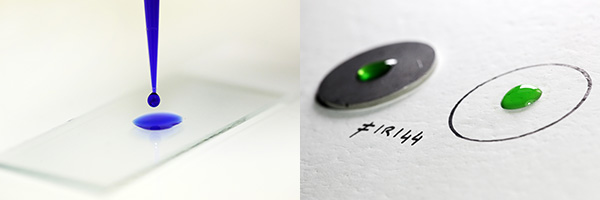
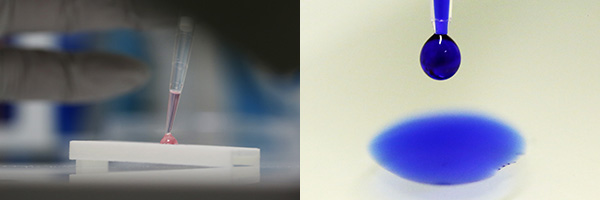
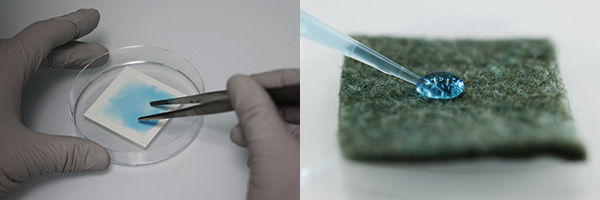
- Antibacterial activity
Hard surfaces
ISO22196: Measurement of antibacterial activity on plastics and other non-porous surfaces.
ISO7581: Evaluation of bactericidal activity of a non-porous antimicrobial surface used in a dry environment.
Hydrophobic materials
ASTM E2180-18: Standard Test Method for Determining the Activity of Incorporated Antimicrobial Agent(s) In Polymeric or Hydrophobic Materials.
Technical Ceramics
ISO18061: Fine Ceramics (Advanced Ceramics, Advanced Technical Ceramics). Determination of antiviral activity of semiconducting photocatalytic materials.
Microorganism strains tested at VirHealth laboratory:
Salmonella enterica
Pseudomonas aeruginosa
Escherichia coli (K12)
Escherichia coli
Escherichia coli carbapenem-resistant
Streptococcus pneumoniae
Klebsiella pneumoniae
Acinobacter baumanni carbapenem-resistant
Spore Bacillus subtilis
Spore Bacillus atrophaeus
Mycobacterium terrae
Candida Albicans
Listeria monocytogenes
Acinetobacter baumannii
Staphylococcus aureus
Staphylococcus aureus MRSA
Enterococcus hirae
Clostridium difficile
Spore Bacillus steraothermo
Mycobacterium avium
Aspergillus brasiliensis
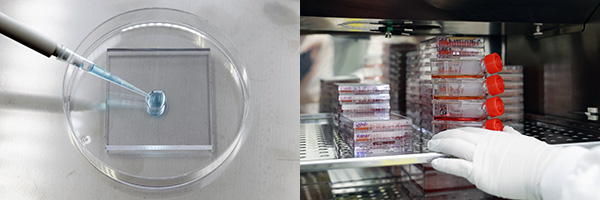
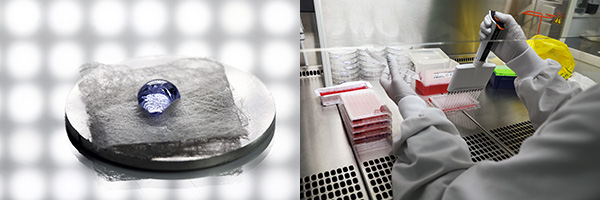
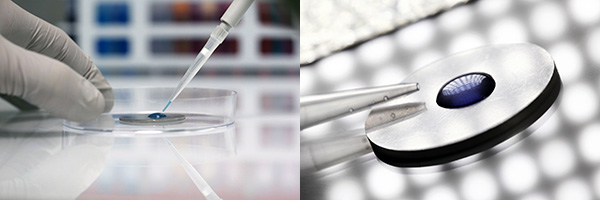
- Durability of antimicrobial surface coatings and antimicrobial agents containing material
Test methods attempt to simulate real-world usage by proposing experimental scenarios (ISO, EPA) to simulate the impact of physical and chemicals attacks throughout the life cycle of antimicrobial products. These methods including abrasion and chemical treatment representing a degree of normal and relevant physical wear, as well as reproduce potential effects resulting from repeated exposure to biocidal chemical solutions.
-Simulation of several weeks of periodic cleaning and disinfection according to EPA SOP MB-40/MB-41
-Simulation of several weeks of periodic disinfection/wipes
-Dry/wet abrasion simulation according to client’s need
Evaluation of antiviral and/or antibacterial efficacy (abraded and unabraded supports) according to standard or tailor-made protocols (EPA SOP MB-40 or ISO).



